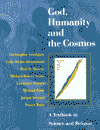Judging the Fit Between Data and RealityAny realist view - in science or theology - any view which holds that our theories in some way connect with the-way-things-really-are, and especially a critical realism (see critical realism in science and religion), must develop criteria for judging the fit between the data generated within the theory, on the one hand, and reality on the other. Although it is unclear how we could be sure whether we had arrived at the best fit between scientific data and reality, the following criteria are widely agreed to constitute pointers to such a fit. They are:
These three can be seen as interrelated
aspects of a ‘coherence-based’ approach to the assessment of truth. See also applying critical realism to theology.
Email
link | Feedback | Contributed by: Dr. Christopher Southgate
|






